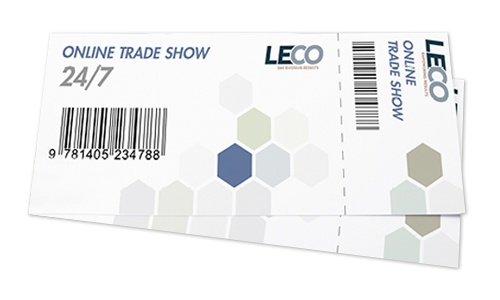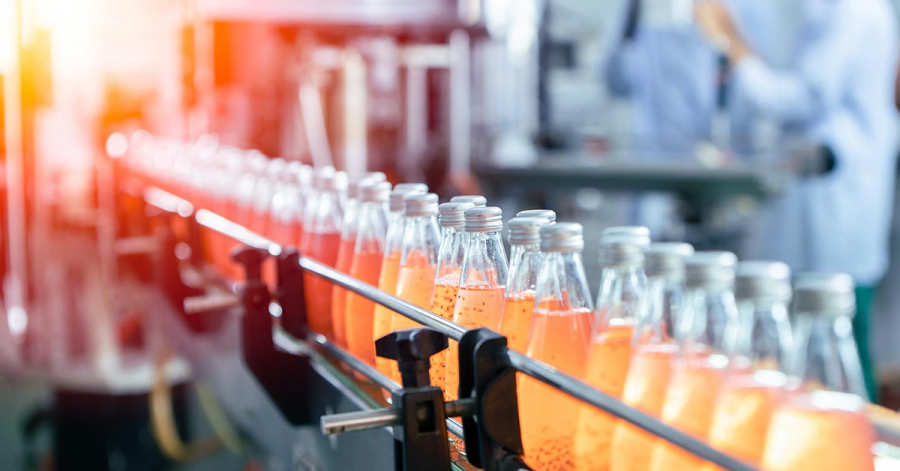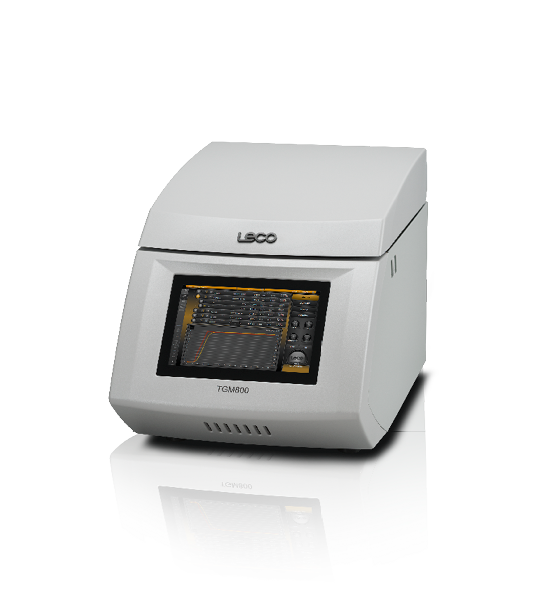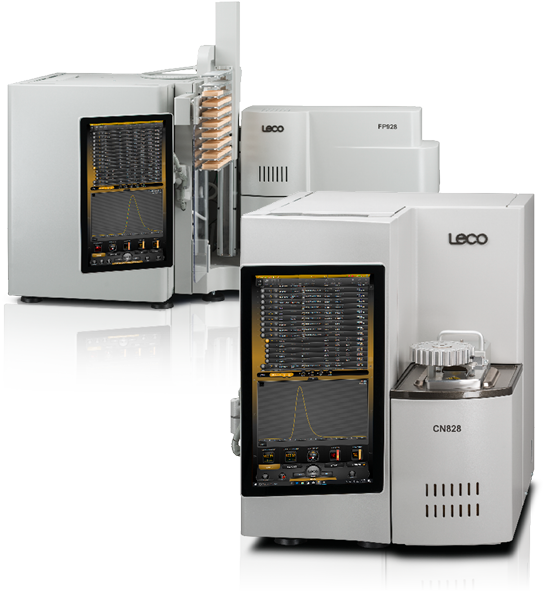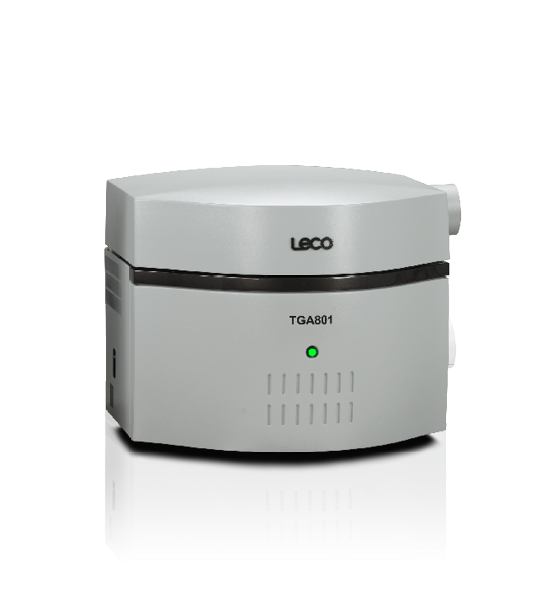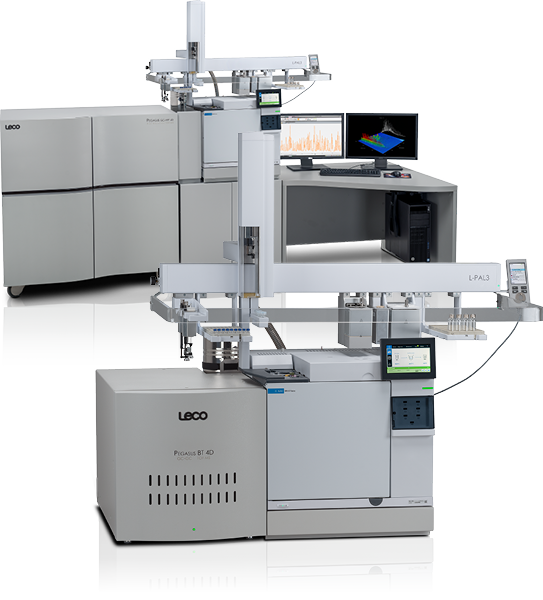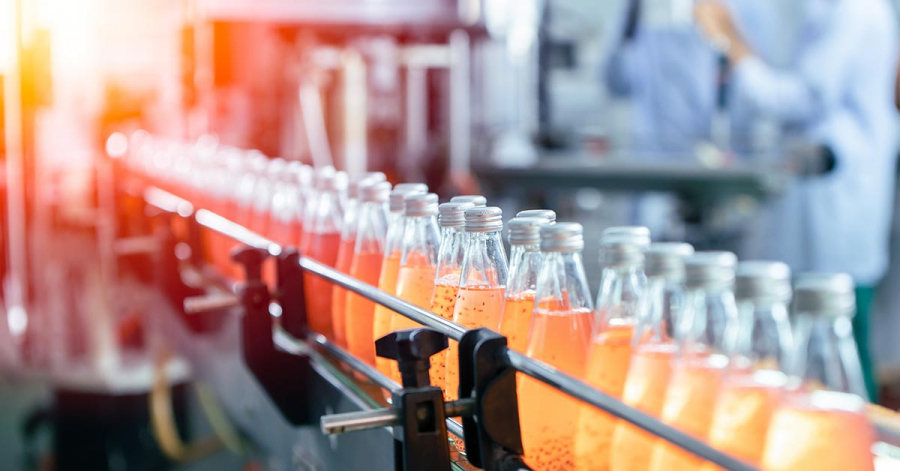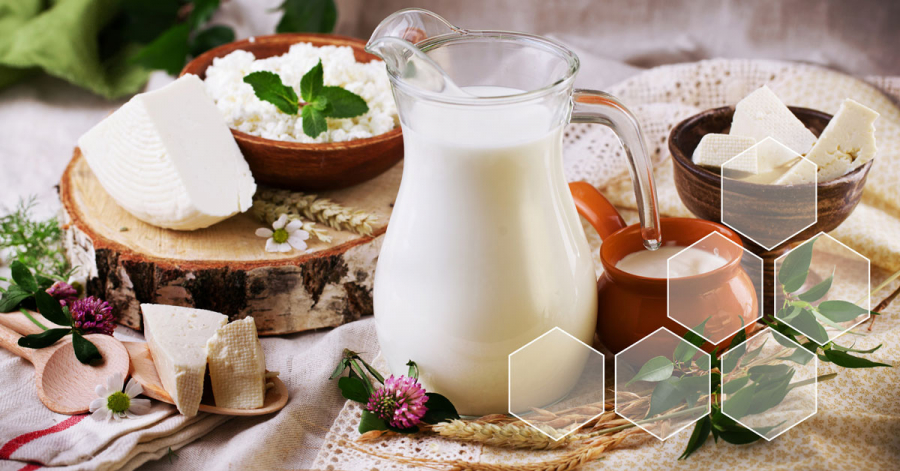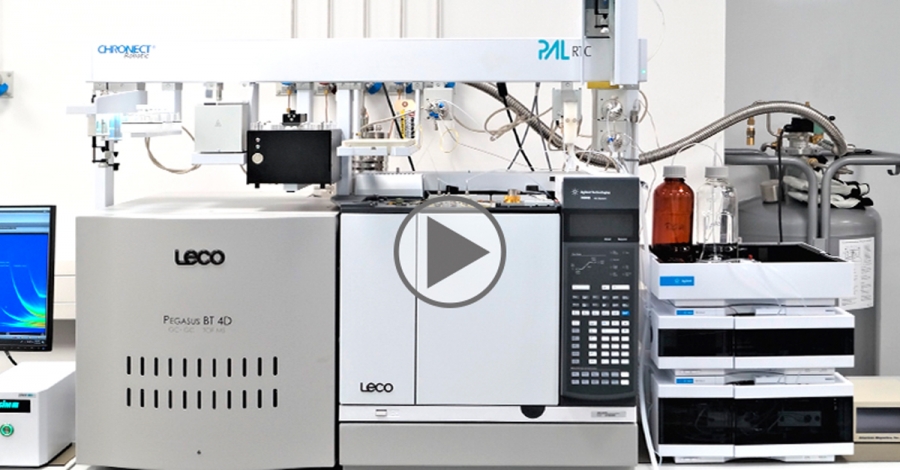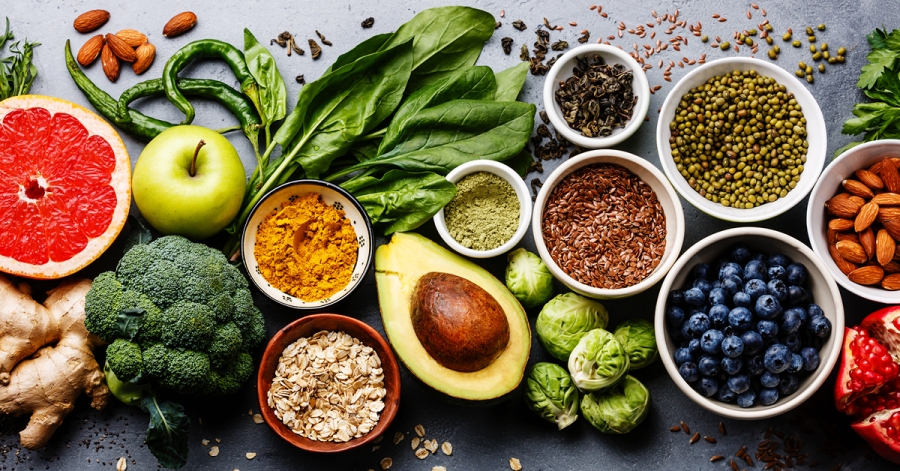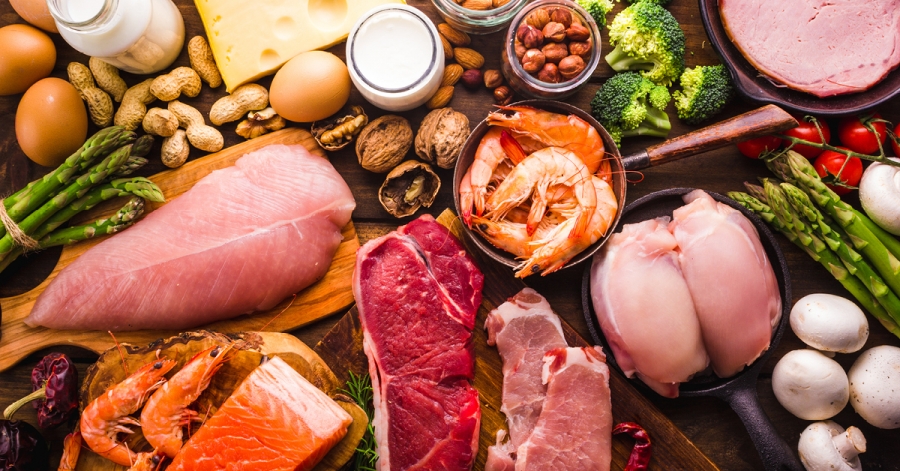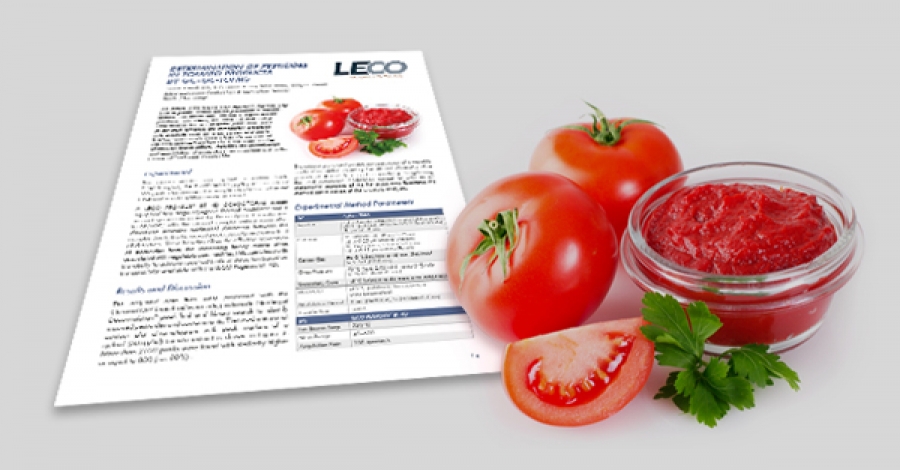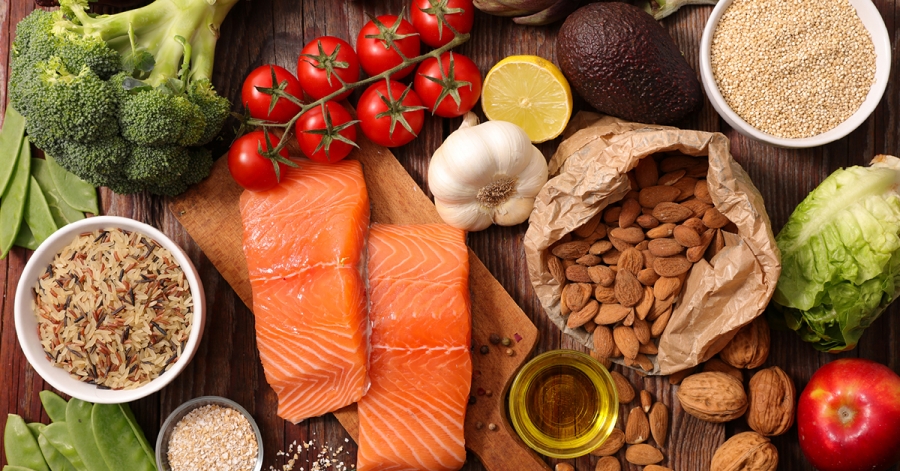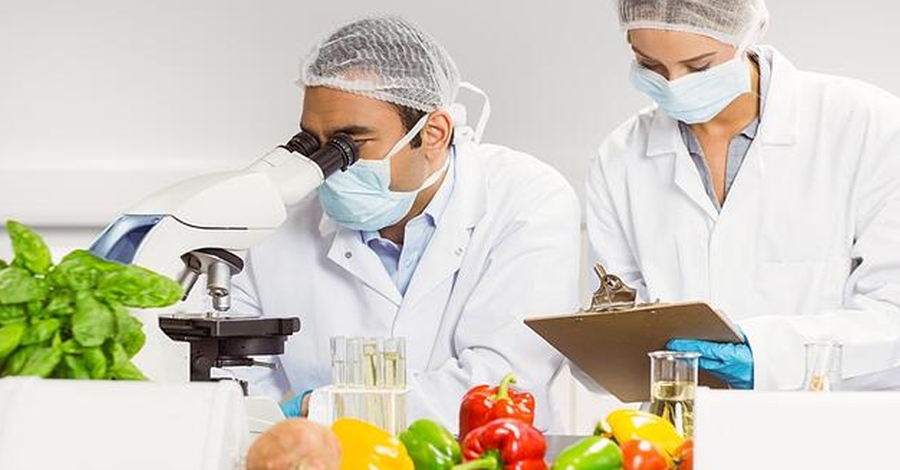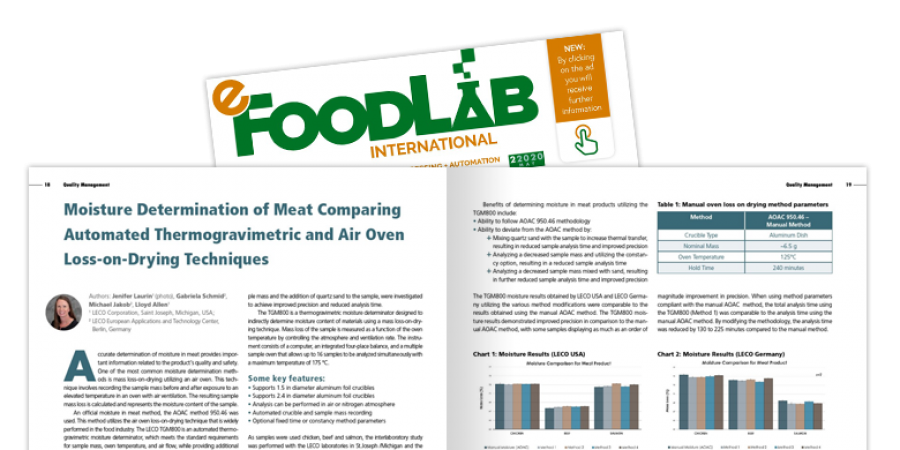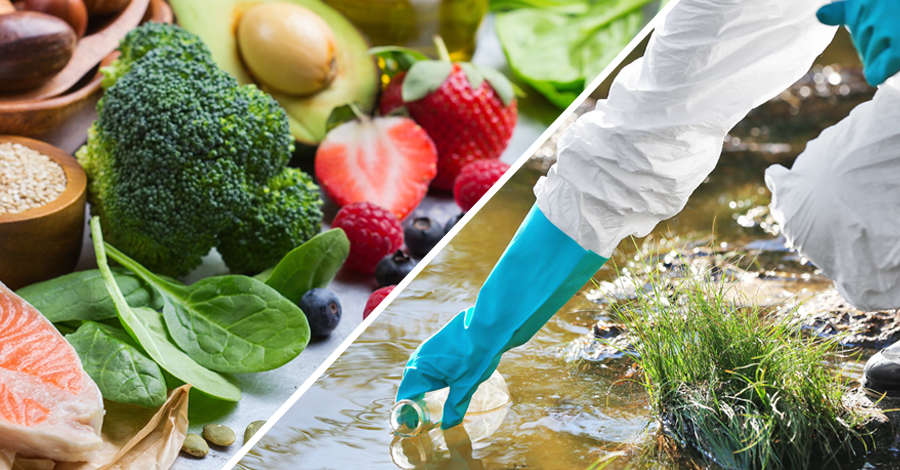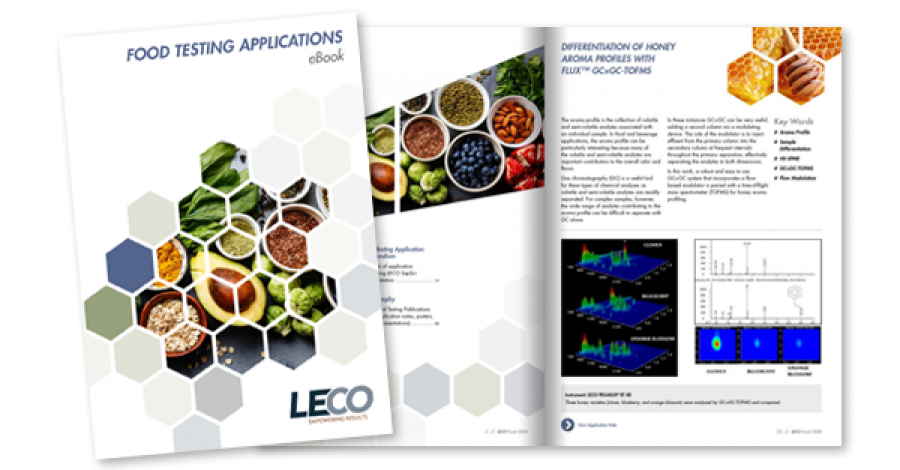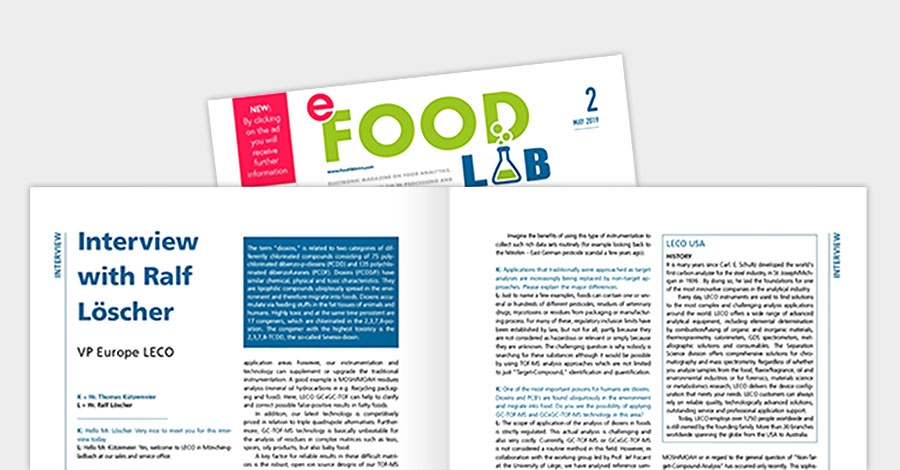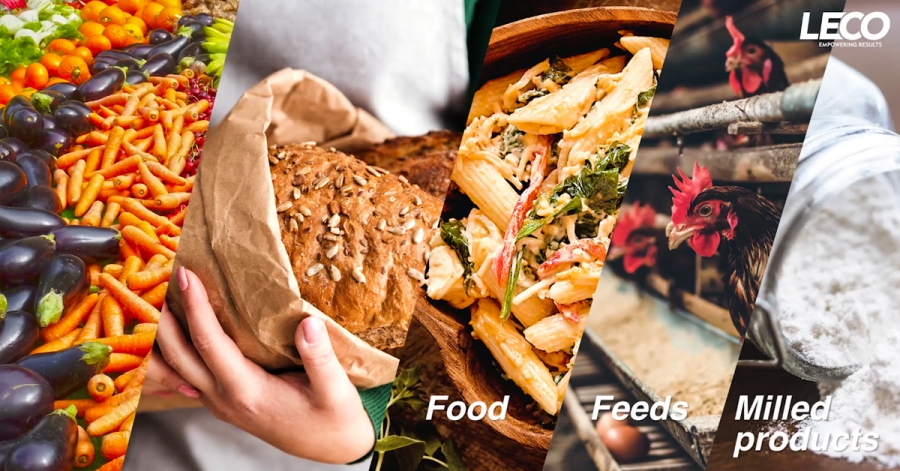
 LECO
Empowering Results
LECO
Empowering Results
Afficher les éléments par tag : Aliments
Explore the Fascinating World of Separation Science
The very first GC-MS was a GC-TOFMS which was built in 1947. The information it provided was much too large to record, and it was not until the mid-1990s when LECO introduced the first fast GC-TOFMS, that GC-TOFMS became a useable tool for researchers and analysts. Followed a few years later by LECO’s introduction of the first GC×GC-TOFMS.
Today, LECO’s Separation Science products are recognised across the globe as leading advanced technology innovations in TOFMS Mass Spectrometry and Comprehensive two-dimensional Chromatography.
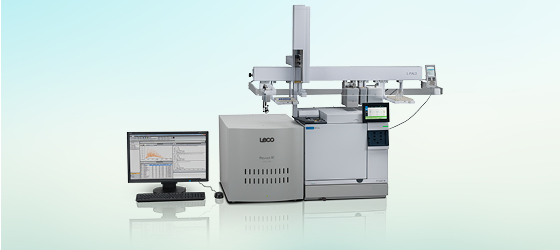
PEGASUS® BT GC-TOFMS
GC Time-Of-Flight Mass Spectrometer
Today‘s laboratories are being asked for more everyday – more samples run, more data acquired, more chemical information processed, and more results achieved – all in less time, for less money. ...
The Pegasus BT allows you to achieve all you need from a single sample run, while powerful and user-friendly ChromaTOF® software processes your data and removes the guesswork involved with analyte identification, quantitation, and reporting. The Pegasus BT gives users more uptime, better data, and an increase in overall productivity and efficiency.
Le spectromètre de masse à temps de vol (time-of-flight mass spectrometer, TOFMS) est idéal pour découvrir de nouveaux composés dans votre échantillon, pour quantifier des composés ciblés dans des échantillons complexes et pour augmenter le rendement car compatible avec la "fast GC".
► Download the free whitepaper and brochure
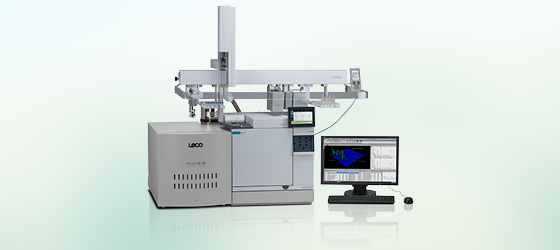
PEGASUS® BT 4D GCxGC-TOFMS
GC×GC Time-Of-Flight Mass Spectrometer
The Pegasus BT 4D offers enhanced sensitivity by coupling our benchtop Pegasus BT with a high-performance GC×GC modulation system. This combination gives the Pegasus BT 4D the ability to interrogate challenging samples ...
... where the best sensitivity is needed. Des fonctionnalités logiciel et instrument uniques et puissantes simplifient la quantification, ainsi que l’utilisation et la compréhension de la GCxGC. Our thermal modulation system, the QuadJet™, is recognised as the gold standard in GC×GC modulation, providing the highest sensitivity available on the market - ideal for analysing the most complex samples.
One of the main advantages of LECO’s GC×GC-TOFMS is its ability to provide vastly improved peak capacity and resolution than traditional GC-MS systems. It also offers comprehensive information about the sample by separating compounds based on two different properties (volatility and polarity). Combining GC×GC with TOFMS is an ultimate solution for the analysis of complex samples.
► Download the free brochure
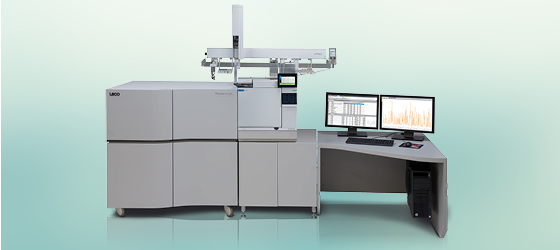
PEGASUS® GC-HRT+
High Resolution Time-Of-Flight Mass Spectrometer
Now with even more sensitivity than ever before, the Pegasus GC-HRT+ is the perfect tool for meeting the challenges of today’s highly complex analytical demands. ...
This high-resolution mass spectrometer features industry leading mass accuracy, full mass range acquisition with exceptional speed, full mass range acquisition with exceptional speed, isotopic abundance and mass resolution, all available in a single injection.
Folded Flight Path® (FFP®) technology and a novel data acquisition system enables simultaneous resolutions of over 50,000 FWHM, mass accuracies less than 1 ppm, and acquisition rates up to 200 spectra/second, without the need to adjust tuning or parameters. Thus, facilitating rich analyte finding and high-confidence analyte identification.
► Download the free brochure
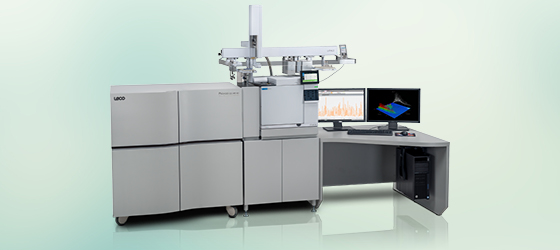
PEGASUS® GC-HRT+ 4D
HR GC×GC Time-Of-Flight Mass Spectrometer
The Pegasus GC-HRT+ 4D combines the highest performance GC×GC and TOFMS tools on the market with High Resolution Deconvolution® (HRD®). Ideal for the most complex samples, ...
... users are able to find more analytes than ever before and confidently identify unknown components.
The Pegasus GC-HRT+ 4D takes advantage of four dimensions of separation and resolution:
- 1st dimension chromatographic resolution
- 2nd dimension chromatographic resolution
- High mass resolution and exceptional mass accuracy
- High Resolution Deconvolution (HRD) from the leaders in deconvolution
ChromaTOF brand software, designed specifically for HRT+ instrumentation and GC×GC support, adds advanced qualitative and quantitative capabilities to an all-in-one user-friendly data system.
► Download the free brochure
Examples of LECO Separation Science Applications
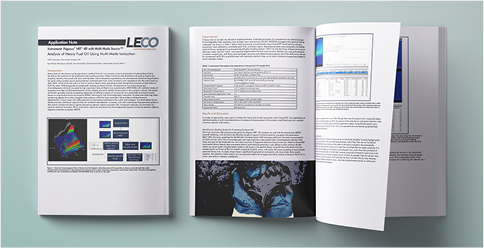
Pétrole
Comprehensive Two-Dimensional Gas Chromatography (GC×GC) has proven to be an extremely valuable analytical technique for the petroleum industry due to its ability to substantially increase the chromatographic peak capacity beyond that of traditional single-dimension gas chromatography. Pairing GC×GC with Time-of Flight Mass Spectrometry (TOFMS) provides unsurpassed characterization capabilities due to the separation power of GC×GC and the ability of TOFMS to provide rich data.
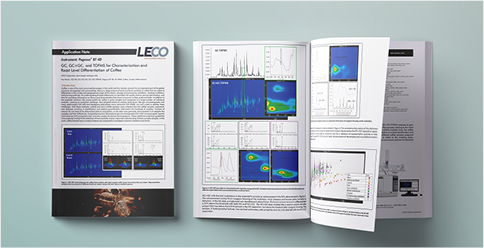
Food Testing
The characterization and safety testing of food and food constitutions can be extremely challenging depending on the complexity and the matrix. The LECO GC×GC TOFMS technology provides a highly powerful separation and remarkable identification allowing for improved workflows. More insights thanks to the advanced technology in combination with LECO’s ChromaTOF® brand software deconvolution algorithm and advanced data analysis tool will improve your Food Quality & Safety Testing and Food R&D. Here we demonstrate the aroma analsyis of two types of coffee and coffee packaging and filter leachates.

Perfume and Cosmetics
LECO‘s GC×GC-TOFMS is a valuable asset in the production of cosmetics and perfumes that align with Islamic principles. It can be used to identify the ingredients and detect any prohibited substances such as alcohol or non-halal animal-derived ingredients.
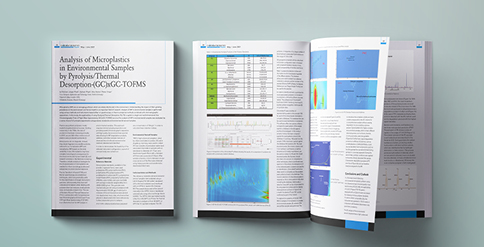
Analyse environnementale
Microplastics are an emerging pollutant which are widely distributed in the environment. Understanding the impact of their growing prevalence on the environment and human health is an important field of research. LECO‘s GC×GC-TOFMS can be used to monitor environmental pollution and air and water quality thus aiding to enforce regulations and ensure the preservation of our environment.

Métabolomique
LECO’s key advantage is the ability to identify and discover more metabolites than other similar technologies. La vitesse de notre acquisition en "full-scan" est incomparable, et si elle est combinée avec la puissance de l'algorithme de déconvolution du logiciel LECO ChromaTOF, permet une caractérisation des métabolomes sans précédent. Nos instruments ont été validés par les chercheurs les plus exigeants du domaine.
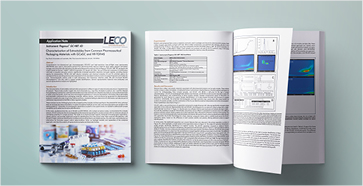
Extractables and Leachables
The characterization of extractable and leachable components from a wide range of materials is an important area of research. Information about extractable and leachable components from packaging and delivery devices for pharmaceutical products is a particular area of growing interest. Analytical testing results on this topic are part of many regulatory submission requirements to the FDA. ...
USP 1663 provides guidance on extractables testing and a variety of analytical approaches can meet compliance. High resolution MS is often considered necessary for identification of unknowns, and sample complexity and low-level detection continue to challenge these analyses. Here, we demonstrate a workflow that uses comprehensive two-dimensional gas chromatography (GC×GC) with HR-TOFMS to help address these challenges.
► App Note | Characterizing Extractables by GC×GC & HR-TOFMS
FAQ – Separation Science
Answer:
Gas chromatography separates components in a mixture by utilizing a thin silica tube coated with a stationary phase. The components, carried by a gas (the mobile phase), move at different speeds based on their affinities for the stationary phase. This differential migration leads to the separation of the components, allowing for their individual analysis and identification.
Alternative response:
- Gas chromatography is a technique for separating a mixture of volatile analytes
- The analytes are transported by a mobile phase (the carrier gas)
- Become distributed between the mobile phase and a stationary phase
- The Stationary Phase is attached to the inside of a very fine column
- Phases are typically characterised by their polarity
- A polar analyte will be retained by polar column for longer than a non-polar analyte
- and vica versa
Answer:
LECO uses Agilent 8890 chromatography. The gas chromatograph includes the following features:
- Compatibility and perfect integration with the mass spectrometer
- Automatic regulation of gas flows
- Agilent supported inlets: Split/Splitless (SSL), Multimode (MMI), Programmable temperature Vaporizer (PTV) etc.
- Programmable oven, up to 450 °C
- Chromatograph compatible with Fast-GC
- The GC is completely controlled by and integrated into LECO’s ChromaTOF software
Answer:
The LECO mass spectrometer is connected to the GC via a heated transfer line. The LECO GC-TOF allows you to have a 'full range' acquisition, without compromise, then a targeted and/or non-targeted data exploitation depending on what you want to do.
It consists of an EI (Electronic Impact) source, a 70 cm flight tube, a reflectron and a detector. Vacuum is provided by an internal turbomolecular pump connected to an external secondary pump.

Answer:
The mass range of the Pegasus BT is from 10 to 1500 m/z. All masses are collected all the time, unlike quadrupole instruments that collect a single mass at a time (quadrupole scanning mode is single ion monitoring, SIM, quickly scanning across the mass range).
Answer:
GC×GC-TOFMS can detect discrepancies in the composition of food products, helping to expose fraudulent claims of Halal certification and ensure consumer confidence in authentic Halal products.
Answer:
By examining the chemical composition of inks and pigments, GC×GC-TOFMS provides insights into the materials used in Islamic calligraphy and manuscripts, aiding in their preservation and authentication. An example of similar work can be read in this publication on analysing the paints used by Leonardo Da Vinci.
Answer:
LECO’s GC×GC-TOFMS system utilizes two columns with different separation mechanisms, providing enhanced chromatographic resolution for the analysis of complex mixtures. In one dimension the analytes are separated by polarity, or according to boiling point. An additional dimension separates according to an alternative property, of which there are many. This results in a 3D image – the two dimensions of separation and the abundance of the analytes in the third dimension.
Answer:
LECO's StayClean® ion source originates in the requirement for a fast source to match the speed of the TOFMS. Accomplished by reducing ion to ion interactions, such as with the walls of the source. The source was thus designed without walls – so there is nothing to clean. Massively reduced downtimes, especially for complex matrices and more reproducible results.
Answer:
Yes! With superior separation power and precision, LECO’s GC×GC-TOFMS system can uncover hidden details and confidently identify components, even in the most intricate mixtures:
- Increases detectability
- Removes analytes from matrix interference
- Separates co-elluting peaks
- Creates cleaner peaks, which match closer with libraries
- Creates structured chromatograms thus further improving identification confidence
Answer:
The cryogenic Quad Jet modulator consistently delivers reproducible quantitative results not only within the lab but also between labs worldwide. This is achieved because:
- There are two cold jets. So, eluent from the primary column does not flow into the secondary column by mistake
- The distance between cold zones is identical in every system worldwide, unlike other systems that require manual adjustment and intervention
- The modulation is completely computer controlled. This along with the 2 separate cold zones, allows for variable modulation periods in the same analysis, vastly improving separation across the chromatogram
- In the same way the primary column is temperature controlled in the primary oven, the secondary column is also independently controlled, allowing for total control of the chromatogram along the entire column setup
These four features not only improve separation and control, they are also unique to the LECO QuadJet.
Answer:
By combining comprehensive two-dimensional gas chromatography (GC×GC) with high-speed, high-sensitivity time-of-flight mass spectrometry (TOFMS), LECO's GC×GC-TOFMS can separate and identify the complex mixtures of flavours and fragrances in food samples with detail and precision.
Answer:
Yes! LECO’s GC×GC-TOFMS is an excellent tool for non-intentionally added substances (NIAS) analysis in food safety. It allows for the comprehensive analysis of complex food samples, ensuring the detection and identification of potential contaminants and unwanted substances. For example, LECO’s MOSH/MOAH solution is widely recognised as the most comprehensive and rigorous analyser for mineral oil contamination in food stuffs.
Answer:
LECO’s GC×GC technology utilizes two stages of separation, significantly increasing resolution and analysis power compared to traditional gas chromatography. This allows for the detailed separation and identification of complex mixtures with unparalleled precision.
Answer:
LECO’s TOFMS technology offers excellent sensitivity, speed, and resolution in mass spectrometry. By fragmenting and ionizing analyte molecules and separating the fragments based on their mass-to-charge ratio, LECO's TOFMS enables highly accurate identification and detection of compounds in samples. The system not only records to a computer at high speed, it detects at a rate of 32,000 Hz thus producing a very high level of accuracy.
Answer:
GC×GC-TOFMS enables the analysis of dietary supplements for the presence of non-compliant ingredients, such as animal-derived gelatine, ensuring that the products meet the strict requirements of Halal certification.
Answer:
GC×GC-TOFMS is a valuable tool for monitoring air and soil quality near Islamic sacred sites, identifying pollutants that may pose a risk to their preservation and guiding conservation efforts. As an example, Imperial College London have utilised a LECO Pegasus BT 4D to identify microplastics in the air of London. You can read about it here.
Answer:
LECO’s GC×GC-TOFMS system utilizes Time-of-Flight Mass Spectrometry (TOFMS), which provides high-speed detection of ionized compounds based on their mass-to-charge ratio.
Answer:
LECO provides software for data analysis, enabling compound identification, quantification, and other types of analysis based on the mass spectra obtained from the TOFMS.
Answer:
LECO’s StayClean ion source, a standard feature in every Pegasus BT GC-TOFMS and GC×GC-TOFMS system, flushes neutrals and contaminants continuously. This virtually eliminates the need for routine maintenance, allowing you to spend less time on upkeep and more time on your research.
Answer:
Sample handling is crucial in GC-MS analysis. LECO employs advanced sample handling robots called Autosamplers that can handle samples in three dimensions of space. These robots ensure precise and consistent sample preparation, ranging from simple liquid injections to complex processes like chemical reactions, extractions, and accurate dilutions.
Answer:
The first GC-MS was a GC-TOFMS developed in the 1950s. However, the technique was too powerful for data recording at the time. In the mid-1990s the first GC-TOFMS capable of recording the data for processing was developed by LECO. This breakthrough in fast GC-TOFMS technology allowed researchers and analysts to utilize the capabilities of GC-TOFMS for their analytical needs.
Answer:
By combining two-dimensional separation, robust ionization, and high-speed TOFMS detection, and patented deconvolution algorithms LECO's GC×GC-TOFMS system offers a powerful solution for analysing complex mixtures with enhanced resolution, sensitivity, and separation power.
Answer:
By analysing the chemical composition of materials used in ancient Islamic artifacts, GC×GC-TOFMS assists in determining their authenticity, providing valuable insights into historical and cultural heritage. The chemical composition of such artifacts are extremely complex so utilising multidimensional chromatography techniques with high speed TOFMS, a chemical profile can be created. Furthermore, LECO’s post processing software packages, ChromaTOF Tile and ChromaTOF Sync can identify differences between samples to compare artifacts and identify biomarkers.
Let LECO help you
find the right instruments for your needs.
Si vous souhaitez en savoir plus sur nos produits et solutions pour l’analyse de produits agroalimentaires, réservez un billet gratuit pour notre salon virtuel ou programmez une démonstration en ligne pour avoir un aperçu plus précis de nos instruments.
Explore the Fascinating World of Separation Science
The very first GC-MS was a GC-TOFMS which was built in 1947. The information it provided was much too large to record, and it was not until the mid-1990s when LECO introduced the first fast GC-TOFMS, that GC-TOFMS became a useable tool for researchers and analysts. Followed a few years later by LECO’s introduction of the first GC×GC-TOFMS.
Today, LECO’s Separation Science products are recognised across the globe as leading advanced technology innovations in TOFMS Mass Spectrometry and Comprehensive two-dimensional Chromatography.

PEGASUS® BT GC-TOFMS
GC Time-Of-Flight Mass Spectrometer
Today‘s laboratories are being asked for more everyday – more samples run, more data acquired, more chemical information processed, and more results achieved – all in less time, for less money. ...
The Pegasus BT allows you to achieve all you need from a single sample run, while powerful and user-friendly ChromaTOF® software processes your data and removes the guesswork involved with analyte identification, quantitation, and reporting. The Pegasus BT gives users more uptime, better data, and an increase in overall productivity and efficiency.
Le spectromètre de masse à temps de vol (time-of-flight mass spectrometer, TOFMS) est idéal pour découvrir de nouveaux composés dans votre échantillon, pour quantifier des composés ciblés dans des échantillons complexes et pour augmenter le rendement car compatible avec la "fast GC".
► Download the free whitepaper and brochure

PEGASUS® BT 4D GCxGC-TOFMS
GC×GC Time-Of-Flight Mass Spectrometer
The Pegasus BT 4D offers enhanced sensitivity by coupling our benchtop Pegasus BT with a high-performance GC×GC modulation system. This combination gives the Pegasus BT 4D the ability to interrogate challenging samples ...
... where the best sensitivity is needed. Des fonctionnalités logiciel et instrument uniques et puissantes simplifient la quantification, ainsi que l’utilisation et la compréhension de la GCxGC. Our thermal modulation system, the QuadJet™, is recognised as the gold standard in GC×GC modulation, providing the highest sensitivity available on the market - ideal for analysing the most complex samples.
One of the main advantages of LECO’s GC×GC-TOFMS is its ability to provide vastly improved peak capacity and resolution than traditional GC-MS systems. It also offers comprehensive information about the sample by separating compounds based on two different properties (volatility and polarity). Combining GC×GC with TOFMS is an ultimate solution for the analysis of complex samples.
► Download the free brochure

PEGASUS® GC-HRT+
High Resolution Time-Of-Flight Mass Spectrometer
Now with even more sensitivity than ever before, the Pegasus GC-HRT+ is the perfect tool for meeting the challenges of today’s highly complex analytical demands. ...
This high-resolution mass spectrometer features industry leading mass accuracy, full mass range acquisition with exceptional speed, full mass range acquisition with exceptional speed, isotopic abundance and mass resolution, all available in a single injection.
Folded Flight Path® (FFP®) technology and a novel data acquisition system enables simultaneous resolutions of over 50,000 FWHM, mass accuracies less than 1 ppm, and acquisition rates up to 200 spectra/second, without the need to adjust tuning or parameters. Thus, facilitating rich analyte finding and high-confidence analyte identification.
► Download the free brochure

PEGASUS® GC-HRT+ 4D
HR GC×GC Time-Of-Flight Mass Spectrometer
The Pegasus GC-HRT+ 4D combines the highest performance GC×GC and TOFMS tools on the market with High Resolution Deconvolution® (HRD®). Ideal for the most complex samples, ...
... users are able to find more analytes than ever before and confidently identify unknown components.
The Pegasus GC-HRT+ 4D takes advantage of four dimensions of separation and resolution:
- 1st dimension chromatographic resolution
- 2nd dimension chromatographic resolution
- High mass resolution and exceptional mass accuracy
- High Resolution Deconvolution (HRD) from the leaders in deconvolution
ChromaTOF brand software, designed specifically for HRT+ instrumentation and GC×GC support, adds advanced qualitative and quantitative capabilities to an all-in-one user-friendly data system.
► Download the free brochure
Examples of LECO Separation Science Applications

Pétrole
Comprehensive Two-Dimensional Gas Chromatography (GC×GC) has proven to be an extremely valuable analytical technique for the petroleum industry due to its ability to substantially increase the chromatographic peak capacity beyond that of traditional single-dimension gas chromatography. Pairing GC×GC with Time-of Flight Mass Spectrometry (TOFMS) provides unsurpassed characterization capabilities due to the separation power of GC×GC and the ability of TOFMS to provide rich data.

Food Testing
The characterization and safety testing of food and food constitutions can be extremely challenging depending on the complexity and the matrix. The LECO GC×GC TOFMS technology provides a highly powerful separation and remarkable identification allowing for improved workflows. More insights thanks to the advanced technology in combination with LECO’s ChromaTOF® brand software deconvolution algorithm and advanced data analysis tool will improve your Food Quality & Safety Testing and Food R&D. Here we demonstrate the aroma analsyis of two types of coffee and coffee packaging and filter leachates.

Perfume and Cosmetics
LECO‘s GC×GC-TOFMS is a valuable asset in the production of cosmetics and perfumes that align with Islamic principles. It can be used to identify the ingredients and detect any prohibited substances such as alcohol or non-halal animal-derived ingredients.

Analyse environnementale
Microplastics are an emerging pollutant which are widely distributed in the environment. Understanding the impact of their growing prevalence on the environment and human health is an important field of research. LECO‘s GC×GC-TOFMS can be used to monitor environmental pollution and air and water quality thus aiding to enforce regulations and ensure the preservation of our environment.

Métabolomique
LECO’s key advantage is the ability to identify and discover more metabolites than other similar technologies. La vitesse de notre acquisition en "full-scan" est incomparable, et si elle est combinée avec la puissance de l'algorithme de déconvolution du logiciel LECO ChromaTOF, permet une caractérisation des métabolomes sans précédent. Nos instruments ont été validés par les chercheurs les plus exigeants du domaine.

Extractables and Leachables
The characterization of extractable and leachable components from a wide range of materials is an important area of research. Information about extractable and leachable components from packaging and delivery devices for pharmaceutical products is a particular area of growing interest. Analytical testing results on this topic are part of many regulatory submission requirements to the FDA. ...
USP 1663 provides guidance on extractables testing and a variety of analytical approaches can meet compliance. High resolution MS is often considered necessary for identification of unknowns, and sample complexity and low-level detection continue to challenge these analyses. Here, we demonstrate a workflow that uses comprehensive two-dimensional gas chromatography (GC×GC) with HR-TOFMS to help address these challenges.
► App Note | Characterizing Extractables by GC×GC & HR-TOFMS
FAQ – Separation Science
Answer:
Gas chromatography separates components in a mixture by utilizing a thin silica tube coated with a stationary phase. The components, carried by a gas (the mobile phase), move at different speeds based on their affinities for the stationary phase. This differential migration leads to the separation of the components, allowing for their individual analysis and identification.
Alternative response:
- Gas chromatography is a technique for separating a mixture of volatile analytes
- The analytes are transported by a mobile phase (the carrier gas)
- Become distributed between the mobile phase and a stationary phase
- The Stationary Phase is attached to the inside of a very fine column
- Phases are typically characterised by their polarity
- A polar analyte will be retained by polar column for longer than a non-polar analyte
- and vica versa
Answer:
LECO uses Agilent 8890 chromatography. The gas chromatograph includes the following features:
- Compatibility and perfect integration with the mass spectrometer
- Automatic regulation of gas flows
- Agilent supported inlets: Split/Splitless (SSL), Multimode (MMI), Programmable temperature Vaporizer (PTV) etc.
- Programmable oven, up to 450 °C
- Chromatograph compatible with Fast-GC
- The GC is completely controlled by and integrated into LECO’s ChromaTOF software
Answer:
The LECO mass spectrometer is connected to the GC via a heated transfer line. The LECO GC-TOF allows you to have a 'full range' acquisition, without compromise, then a targeted and/or non-targeted data exploitation depending on what you want to do.
It consists of an EI (Electronic Impact) source, a 70 cm flight tube, a reflectron and a detector. Vacuum is provided by an internal turbomolecular pump connected to an external secondary pump.

Answer:
The mass range of the Pegasus BT is from 10 to 1500 m/z. All masses are collected all the time, unlike quadrupole instruments that collect a single mass at a time (quadrupole scanning mode is single ion monitoring, SIM, quickly scanning across the mass range).
Answer:
GC×GC-TOFMS can detect discrepancies in the composition of food products, helping to expose fraudulent claims of Halal certification and ensure consumer confidence in authentic Halal products.
Answer:
By examining the chemical composition of inks and pigments, GC×GC-TOFMS provides insights into the materials used in Islamic calligraphy and manuscripts, aiding in their preservation and authentication. An example of similar work can be read in this publication on analysing the paints used by Leonardo Da Vinci.
Answer:
LECO’s GC×GC-TOFMS system utilizes two columns with different separation mechanisms, providing enhanced chromatographic resolution for the analysis of complex mixtures. In one dimension the analytes are separated by polarity, or according to boiling point. An additional dimension separates according to an alternative property, of which there are many. This results in a 3D image – the two dimensions of separation and the abundance of the analytes in the third dimension.
Answer:
LECO's StayClean® ion source originates in the requirement for a fast source to match the speed of the TOFMS. Accomplished by reducing ion to ion interactions, such as with the walls of the source. The source was thus designed without walls – so there is nothing to clean. Massively reduced downtimes, especially for complex matrices and more reproducible results.
Answer:
Yes! With superior separation power and precision, LECO’s GC×GC-TOFMS system can uncover hidden details and confidently identify components, even in the most intricate mixtures:
- Increases detectability
- Removes analytes from matrix interference
- Separates co-elluting peaks
- Creates cleaner peaks, which match closer with libraries
- Creates structured chromatograms thus further improving identification confidence
Answer:
The cryogenic Quad Jet modulator consistently delivers reproducible quantitative results not only within the lab but also between labs worldwide. This is achieved because:
- There are two cold jets. So, eluent from the primary column does not flow into the secondary column by mistake
- The distance between cold zones is identical in every system worldwide, unlike other systems that require manual adjustment and intervention
- The modulation is completely computer controlled. This along with the 2 separate cold zones, allows for variable modulation periods in the same analysis, vastly improving separation across the chromatogram
- In the same way the primary column is temperature controlled in the primary oven, the secondary column is also independently controlled, allowing for total control of the chromatogram along the entire column setup
These four features not only improve separation and control, they are also unique to the LECO QuadJet.
Answer:
By combining comprehensive two-dimensional gas chromatography (GC×GC) with high-speed, high-sensitivity time-of-flight mass spectrometry (TOFMS), LECO's GC×GC-TOFMS can separate and identify the complex mixtures of flavours and fragrances in food samples with detail and precision.
Answer:
Yes! LECO’s GC×GC-TOFMS is an excellent tool for non-intentionally added substances (NIAS) analysis in food safety. It allows for the comprehensive analysis of complex food samples, ensuring the detection and identification of potential contaminants and unwanted substances. For example, LECO’s MOSH/MOAH solution is widely recognised as the most comprehensive and rigorous analyser for mineral oil contamination in food stuffs.
Answer:
LECO’s GC×GC technology utilizes two stages of separation, significantly increasing resolution and analysis power compared to traditional gas chromatography. This allows for the detailed separation and identification of complex mixtures with unparalleled precision.
Answer:
LECO’s TOFMS technology offers excellent sensitivity, speed, and resolution in mass spectrometry. By fragmenting and ionizing analyte molecules and separating the fragments based on their mass-to-charge ratio, LECO's TOFMS enables highly accurate identification and detection of compounds in samples. The system not only records to a computer at high speed, it detects at a rate of 32,000 Hz thus producing a very high level of accuracy.
Answer:
GC×GC-TOFMS enables the analysis of dietary supplements for the presence of non-compliant ingredients, such as animal-derived gelatine, ensuring that the products meet the strict requirements of Halal certification.
Answer:
GC×GC-TOFMS is a valuable tool for monitoring air and soil quality near Islamic sacred sites, identifying pollutants that may pose a risk to their preservation and guiding conservation efforts. As an example, Imperial College London have utilised a LECO Pegasus BT 4D to identify microplastics in the air of London. You can read about it here.
Answer:
LECO’s GC×GC-TOFMS system utilizes Time-of-Flight Mass Spectrometry (TOFMS), which provides high-speed detection of ionized compounds based on their mass-to-charge ratio.
Answer:
LECO provides software for data analysis, enabling compound identification, quantification, and other types of analysis based on the mass spectra obtained from the TOFMS.
Answer:
LECO’s StayClean ion source, a standard feature in every Pegasus BT GC-TOFMS and GC×GC-TOFMS system, flushes neutrals and contaminants continuously. This virtually eliminates the need for routine maintenance, allowing you to spend less time on upkeep and more time on your research.
Answer:
Sample handling is crucial in GC-MS analysis. LECO employs advanced sample handling robots called Autosamplers that can handle samples in three dimensions of space. These robots ensure precise and consistent sample preparation, ranging from simple liquid injections to complex processes like chemical reactions, extractions, and accurate dilutions.
Answer:
The first GC-MS was a GC-TOFMS developed in the 1950s. However, the technique was too powerful for data recording at the time. In the mid-1990s the first GC-TOFMS capable of recording the data for processing was developed by LECO. This breakthrough in fast GC-TOFMS technology allowed researchers and analysts to utilize the capabilities of GC-TOFMS for their analytical needs.
Answer:
By combining two-dimensional separation, robust ionization, and high-speed TOFMS detection, and patented deconvolution algorithms LECO's GC×GC-TOFMS system offers a powerful solution for analysing complex mixtures with enhanced resolution, sensitivity, and separation power.
Answer:
By analysing the chemical composition of materials used in ancient Islamic artifacts, GC×GC-TOFMS assists in determining their authenticity, providing valuable insights into historical and cultural heritage. The chemical composition of such artifacts are extremely complex so utilising multidimensional chromatography techniques with high speed TOFMS, a chemical profile can be created. Furthermore, LECO’s post processing software packages, ChromaTOF Tile and ChromaTOF Sync can identify differences between samples to compare artifacts and identify biomarkers.
Let LECO help you
find the right instruments for your needs.
Si vous souhaitez en savoir plus sur nos produits et solutions pour l’analyse de produits agroalimentaires, réservez un billet gratuit pour notre salon virtuel ou programmez une démonstration en ligne pour avoir un aperçu plus précis de nos instruments.
Protein determination for liquid and solid samples with LECO after the principle of Dumas can be very easy and convenient. LECO fournit la solution idéale avec les gammes de produits 828 et 928. By integrating state-of-the-art hardware with intuitive, operator-focused software, the LECO 828 and 928 SERIES of instruments are able to analyse a wide variety of sample matrices. All of the advantages of prior LECO models have been optimized, giving your lab the highest reliability, throughput, and ease of use.
Protein determination for liquid and solid samples with LECO after the principle of Dumas can be very easy and convenient. LECO fournit la solution idéale avec les gammes de produits 828 et 928. By integrating state-of-the-art hardware with intuitive, operator-focused software, the LECO 828 and 928 SERIES of instruments are able to analyse a wide variety of sample matrices. All of the advantages of prior LECO models have been optimized, giving your lab the highest reliability, throughput, and ease of use.
La détermination des protéines dans des échantillons liquides avec LECO selon le principe de Dumas peut être très simple et pratique. LECO fournit la solution idéale avec les gammes de produits 828 et 928.
Enhance your Food Analysis
Les instruments LECO analysent la qualité et la valeur nutritionnelle de nombreux produits agroalimentaires, des aliments crus aux produits finis prêts à la consommation. Benefit fom the advantages of our state-of-the-art solutions for your individual food analysis. Elevate your results and save your time.
Specific Advantages Including
- Moisture Determination – Loss on drying automated up to 16 samples simultaneously
- MOSH/MOAH Determination – Identify and quantify the source of contamination
- Detection of Pesticides – Even in the most difficult matrices
- Protein Determination after Dumas – Replacement of Kjeldahl; Results in ≈ 3 minutes fully matrix independent
- Aroma Profiling – Identify what you smell, but never see
Unlock the 2023 special issue of FoodLab Magazine now – Exclusively Available Here!

Explore our exclusive collection of expert articles on aroma, moisture & ash, MOSH/MOAH, and protein, developed in collaboration with FoodLab Magazine. Download now for the latest insights in the food industry.
Instrument Portfolio for Food Analysis
Your Solution For Cost Effective Food Analysis
Check out our broad product portfolio for food safety, nutrition, and moisture analysis. Benefit from the advantages of our state-of-the-art solutions for your individual food analysis.

MOSH MOAH Determination
Quels que soient les contraintes liées à votre préparation d'échantillon, exploitez toute la puissance de la technologie GCxGC & TOF de LECO pour résoudre les challenges de l'analyse MOSH et MOAH.

Determination of Moisture/Ash/Loss on Drying
An accurate determination of moisture content in food or agricultural products provides important information related to the food quality and safety.
White Paper | Protein Analysis - Dumas Vs. Kjeldahl
Have you ever wondered about this old discussion about „Dumas and Kjedahl“ and which one fits better to your needs in the field of protein analysis?
Read our lates white paper related to protein analysis by comparing the methods "Dumas vs. Kjeldahl". Get a concise overview about the theories of operation, and learn how the benefits of a LECO Dumas determinator can impact your workflow.
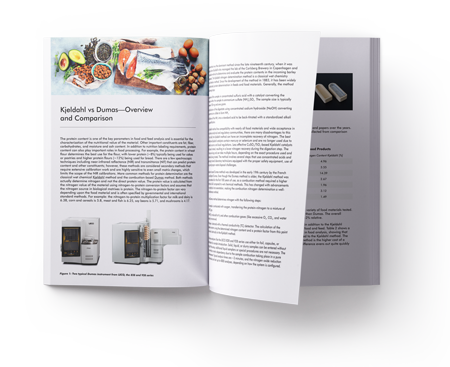
Let LECO help you find the right instruments for your needs.
Si vous souhaitez en savoir plus sur nos produits et solutions pour l’analyse de produits agroalimentaires, réservez un billet gratuit pour notre salon virtuel ou programmez une démonstration en ligne pour avoir un aperçu plus précis de nos instruments.
La détermination des protéines dans des échantillons liquides avec LECO selon le principe de Dumas peut être très simple et pratique. LECO fournit la solution idéale avec les gammes de produits 828 et 928.
L'analyse des produits laitiers est une partie importante du portefeuille de produits LECO pour l'analyse alimentaire. Les systèmes LECO contrôlent la qualité, la sécurité alimentaire et les valeurs nutritionnelles du lait et des produits laitiers. Détermination de l'humidité/des cendres/des protéines, précise, rapide, exacte dans les matrices liquides et solides. Lait cru, crème, caillé, lait en poudre ou fromage : pas de traitement spécial de l'échantillon avec de faibles coûts d'analyse.
Apprenez-en plus sur nos solutions d’analyse alimentaire et lisez nos différentes publications…
Solutions LECO pour l'analyse des MOSH/MOAH
Quelles que soient les contraintes liées à votre flux de travail de préparation d’échantillons, exploitez toute la puissance de la technologie GCxGC et TOF de LECO pour résoudre les défis complexes de l’analyse MOSH et MOAH.
Les présentations suivantes sont disponibles :
Présentation de LECO à l’EURO Fed Lipid 2021
Réalisée en anglais
- « 18th Euro Fed Lipid Congress and Expo, 21 octobre 2021 »
Les fondamentaux sur l'analyse compréhensive des MOSH/MOAH
Réalisée en anglais
- « Principes de base du couplage LC-CG » par Dr Andreas Bruchmann | Axel Semrau GmbH & Co KG
- « Principes et instrumentation de GCxGC et TOF-MS » du Pr. Dr. Ir. Hans-Gerd Janssen | Université de Wageningen & Unilever
- « LC–GC×GC–ToF-MS/FID: A Powerful Platform for MOSH&MOAH Determination (LC–GC×GC–ToF-MS/Détecteur à ionisation de flamme (FID) : une plateforme puissante pour la détermination des teneurs en MOSH et en MOAH) » par la professeure Giorgia Purcaro | Université de Liège
Langue espagnole
- « Cromatografía Bidimensional Exhaustiva acoplada a Espectrometría de Masas de Tiempo de Vuelo: Características y viabilidad para el control y análisis alimentario » de Lourdes Ramos | CSIC-IQOG
- « Contamination MOSH / MOAH. Verificación mediante GC×GC-TOF-MS" de Silvia Losa | SGS Berlin
Nos dernières présentations sur l'analyse des MOSH/MOAH sont disponibles à la demande. Avec ces fondamentaux vous apprendrez tous les tenants et les aboutissants de la LC-GC couplée à la GCxGC et au spectromètre de masse à Temps de Vol pour l'analyse des MOSH/MOAH dans les produits alimentaires.
From raw foods to final consumer-ready products, LECO instruments analyse the quality of and nutritional value of dairy products, meats, cereals, poultry, beer, and wine.
Learn more about our solutions for food analysis and read our various publications…
Solutions LECO pour l'analyse des MOSH/MOAH
Quelles que soient les contraintes liées à votre flux de travail de préparation d’échantillons, exploitez toute la puissance de la technologie GCxGC et TOF de LECO pour résoudre les défis complexes de l’analyse MOSH et MOAH.
Avez-vous vu notre récent article sur Food Navigator ? La teneur en azote dans les matières alimentaires est nécessaire pour mesurer lors de la détermination de la teneur totale en protéines. Cette mesure de la teneur en azote peut être effectuée en utilisant une méthode de chimie humide classique, mais cela a tendance à être un processus lent et fastidieux. La méthode Dumas basée sur la combustion a gagné en popularité ces dernières années, car elle augmente considérablement la productivité du laboratoire. Pourtant, lorsque l’échantillon a un faible niveau d’azote, il peut être difficile à analyser. Par exemples l’amidon de maïs sec, les sacs filtrants NDIN, les boissons nutritionnelles et la bière. Comment la méthode de combustion peut-elle être optimisée pour accueillir ces échantillons d’azote de niveau inférieur ?
Découvrez comment l’utilisation de la chromatographie en phase gazeuse bidimensionnelle compréhensive (GCxGC) associée à un spectromètre de masse à temps de vol (TOF-MS) démontre une excellente qualité de séparation matrice-analyte et analyte-analyte d’un grand nombre de pesticides cibles, à haute sensibilité.
Le LECO Pegasus BT 4D a été utilisé pour développer une méthode efficace de quantification simple et robuste en respectant les exigences SANTE.
Quelle est l’efficacité de votre laboratoire en ce qui concerne les échantillons d’aliments ? Êtes-vous sûr de voir tout ce que votre échantillon a à offrir ? Découvrez comment LECO a élargi le champ des possibles en matière d’analyses de sécurité alimentaire avec cette série de webinaires gratuits.

La récente série d’eSeminar sur SepScience.com, couvrant les solutions de LECO pour l’analyse des aliments et de l’environnement, est désormais disponible en version à la demande. Les discussions abordent des sujets autour du domaine difficile de l’analyse ALIMENTAIRE et de l’analyse ENVIRONNEMENTALE des milliers de produits chimiques présents dans nos réserves en air, en terre et en eau.
Quelle est l’efficacité de votre laboratoire en ce qui concerne les échantillons d’aliments ? Êtes-vous sûr de voir tout ce que votre échantillon a à offrir ? Découvrez comment LECO a élargi le champ des possibles en matière d’analyses de sécurité alimentaire avec cette série de webinaires gratuits.
Tous nos webinaires dureront environ 30 minutes avec une session de questions/réponses à la fin. Inscrivez-vous à tout ce qui vous intéresse !
Jennifer Laurin, Gabriela Schmid, Michael Jakob et Lloyd Allen parlent de la détermination de l’humidité dans la viande. L’article fait référence aux avantages de la détermination automatique de l’humidité.
eFoodLab // Numéro 02/2020 // par Jennifer Laurin, Gabriela Schmid,
Michael Jakob et Lloyd Allen
Une détermination précise de la teneur en humidité des produits laitiers fournit des informations importantes liées à la qualité et la sécurité alimentaire (texture, goût, stabilité microbienne). L’humidité est également une variable clé utilisée pour calculer la pureté, le rendement et/ou l’analyse des constituants d’un produit sur une base sèche.
Le TGM800 offre à l’utilisateur des paramètres de méthode, une automatisation et des capacités matérielles flexibles qui maximisent l’efficacité, la productivité et la performance analytique de la détermination de l’humidité. C’est possible, tout en offrant la capacité de répondre aux exigences de la méthode primaire de perte sur séchage pour l’échantillon.
Ou visitez notre nouveau salon virtuel
Veuillez vous joindre à nous pour deux prochains eSéminaires sur SepScience.com. Nous présentons comment les technologies de pointe LECO GC-TOF-MS et GC×GC-TOF-MS peuvent considérablement améliorer vos applications pour l’analyse des aliments (9 juin) et l’environnement (11 juin).
Cliquez pour vous inscrire maintenant !
Aujourd’hui, le 20 mai, c’est la Journée mondiale des abeilles mellifères. L’abeille est une espèce pollinisatrice importante qui contribue à environ 15 milliards de dollars par an à l’économie américaine grâce à la pollinisation des cultures et 690 millions de livres sterling à l’économie britannique. Les abeilles sont également d’importants pollinisateurs sauvages et jouent un rôle clé dans le maintien de la biodiversité et des services écosystémiques dans de nombreux écosystèmes.
Notre nouvel eBook résume une grande partie du travail d’application de LECO dans le domaine des tests alimentaires. En plus du recueil d’applications, le livre électronique comprend une introduction à la technologie GC×GC et TOFMS, suivie d’un aperçu des différentes solutions matérielles et logicielles qui ont été utilisées pour les applications de test alimentaire. Une bibliographie avec des références supplémentaires se trouve en annexe.
L’eBook est téléchargeable sur SeparationScience dès maintenant.
Téléchargez l’eBook ici…
Ralf Löscher nous parle des dernières technologies et des nombreuses années d’expérience de LECO dans le domaine de l’instrumentation TOFMS. Cet entretien met l’accent sur l’industrie alimentaire et les avantages particuliers que LECO offre à ce marché.
« Dans le domaine de la technologie des techniques séparatives chromatographiques, LECO propose la technologie GC couplée à la spectrométrie de masse (MS) de temps de vol (TOF). Cela inclut la chromatographie unidimensionnelle et bidimensionnelle (GC×GC), qui augmente la résolution et la sensibilité chromatographiques. De plus, notre dernière technologie offre des prix compétitifs par rapport aux alternatives triples quadripolaires. En outre, la technologie GC-TOF-MS est fondamentalement imbattable pour l’analyse des résidus dans des matrices complexes telles que les thés, les épices, les produits gras, mais aussi les aliments pour bébés. »
eFoodLab // Numéro 02/2019 // Entretien avec Ralf Löscher
Les laboratoires d’aujourd’hui sont constamment invités à faire plus avec moins de ressources, ce qui peut provoquer du stress, de la frustration et un débordement d’activité. Nous voulons que vous et votre laboratoire réussissiez en obtenant les résultats sur lesquels vous pouvez compter, tout en facilitant et en simplifiant la vie dans votre laboratoire. Notre dernière innovation en matière d’analyse de l’humidité analyse sans effort vos produits alimentaires, aliments pour animaux, produits broyés et échantillons agricoles.




